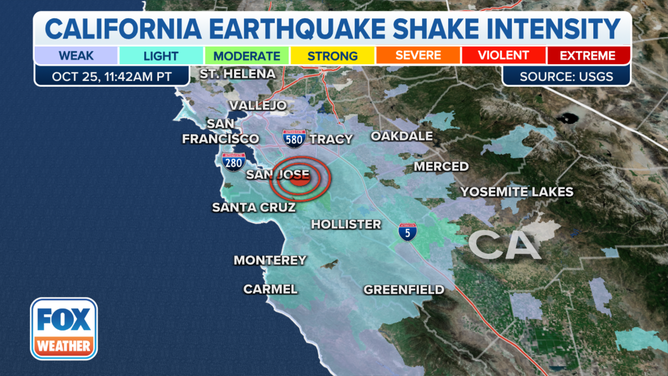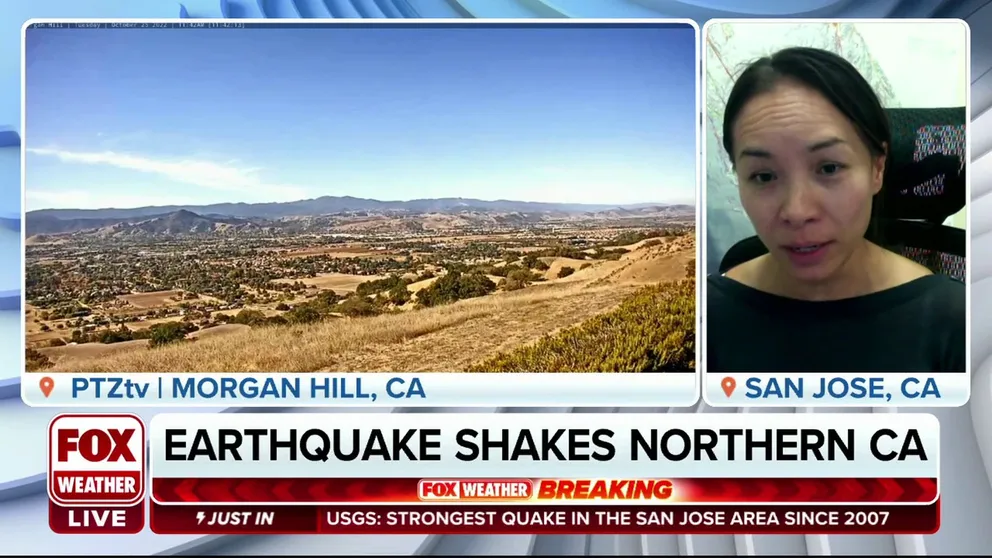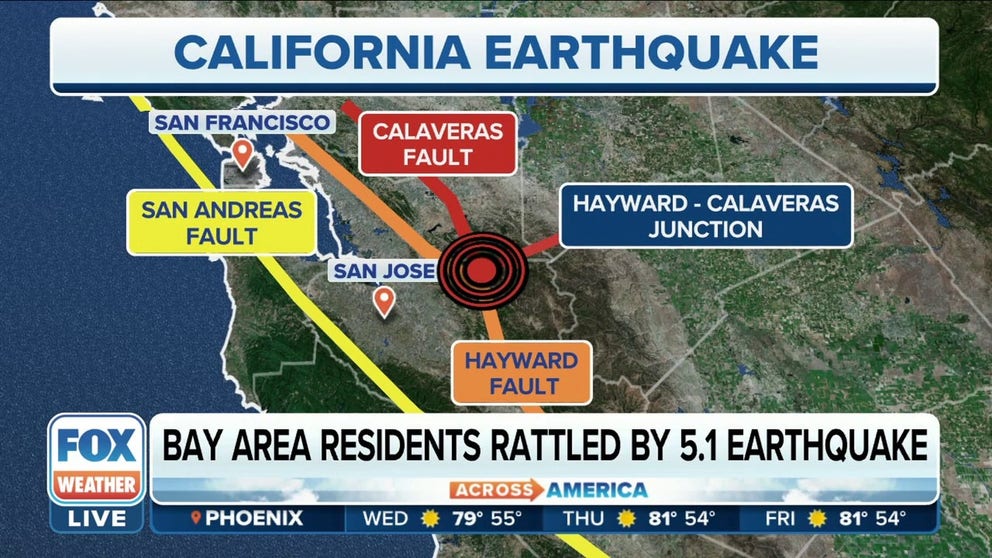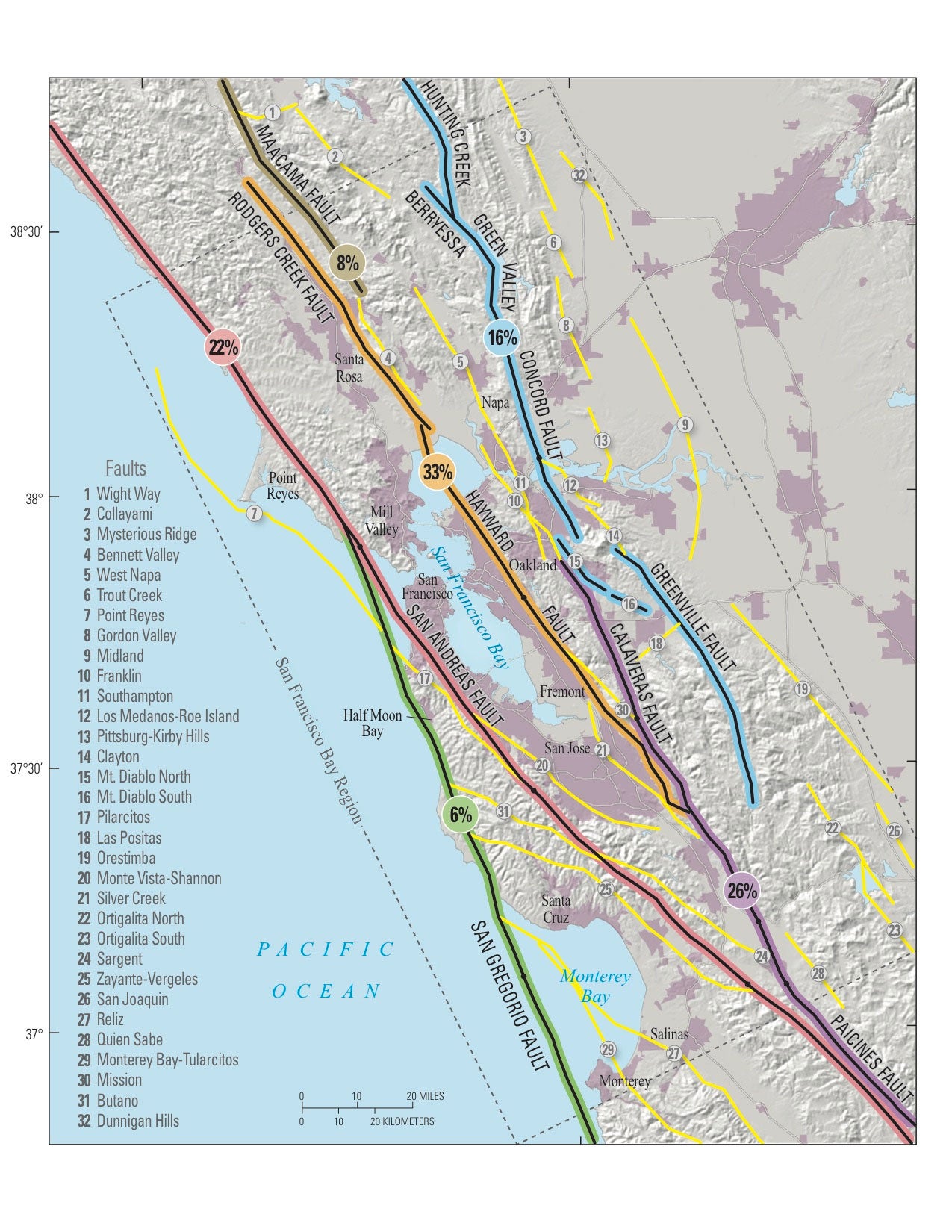Tuesday’s earthquake in California likely not a ‘foreshock’ to larger one, expert says
The magnitude 5.1 quake happened just before noon near San Jose on Tuesday. There have been several smaller aftershocks since.
Earthquake expert: 'What we felt may have been a foreshock'
Dr. Kimberly Blisniuk, Earthquake Expert at San Jose State University, joined FOX Weather to discuss the earthquake that rattled the San Francisco Bay Area on Tuesday.
SAN JOSE, Calif. – An earthquake that rattled parts of the San Francisco Bay Area on Tuesday may lead to aftershocks that could last days or longer.
The magnitude 5.1 earthquake struck shortly before noon just southeast of San Jose, near Alum Rock. It was widely felt across the Bay Area. People as far away as San Diego and Lake Tahoe reported shaking.
‘NOTABLE’ EARTHQUAKE SHAKES NORTHERN CALIFORNIA TUESDAY

California earthquake shake intensity.
(FOX Weather)
A few hours after the temblor, FOX Weather spoke to Kimberly Blisniuk, Ph.D., an earthquake geologist at San Jose State University about the chances for additional aftershocks.
"It’s based on the scale of the magnitude, so it’s 67% of a magnitude 3 or above," Blisniuk said. "As we get to magnitude 5, which is what we just felt, there’s a 2% chance."
As of Wednesday morning, the U.S. Geological Survey forecast for a magnitude 3 or greater quake was at 21% within a day and 45% within a week. The forecast for an earthquake larger than a magnitude 5 or greater was less than 1%.
There have been at least three other tremors reported in the area where Tuesday’s shaking happened, ranging from 2.7 to 3.5 in magnitude.
Scientist on California earthquake: Aftershocks happened south of main shock
Debi Kilb of the Scripts Institution of Oceanography provides insight on the magnitude 5.1 earthquake that rattled the Bay area of California.
Blisniuk said Tuesday’s tremor happened along the Hayward-Calaveras fault, which is part of the larger San Andreas fault system.
"These faults are basically accommodating motion between two big tectonic plates," Blisniuk said. "The two plates are the North American Plate and the Pacific Plate."
EAST VS. WEST: WHY EARTHQUAKES ARE FELT DIFFERENTLY ON EITHER SIDE OF THE U.S.
According to the USGS, the Calaveras fault last produced a notable earthquake in October 2007. That was a 5.4-magnitude temblor near Alum Rock.
California experiences two or three earthquakes each year that can cause sizable damage and register a magnitude of 5.5 and higher, according to the National Earthquake Information Center.
Editor’s Note: An original version of this story incorrectly stated a higher chance for a large aftershock. This has been updated to further clarify that there was only a 2% chance of that threat.


